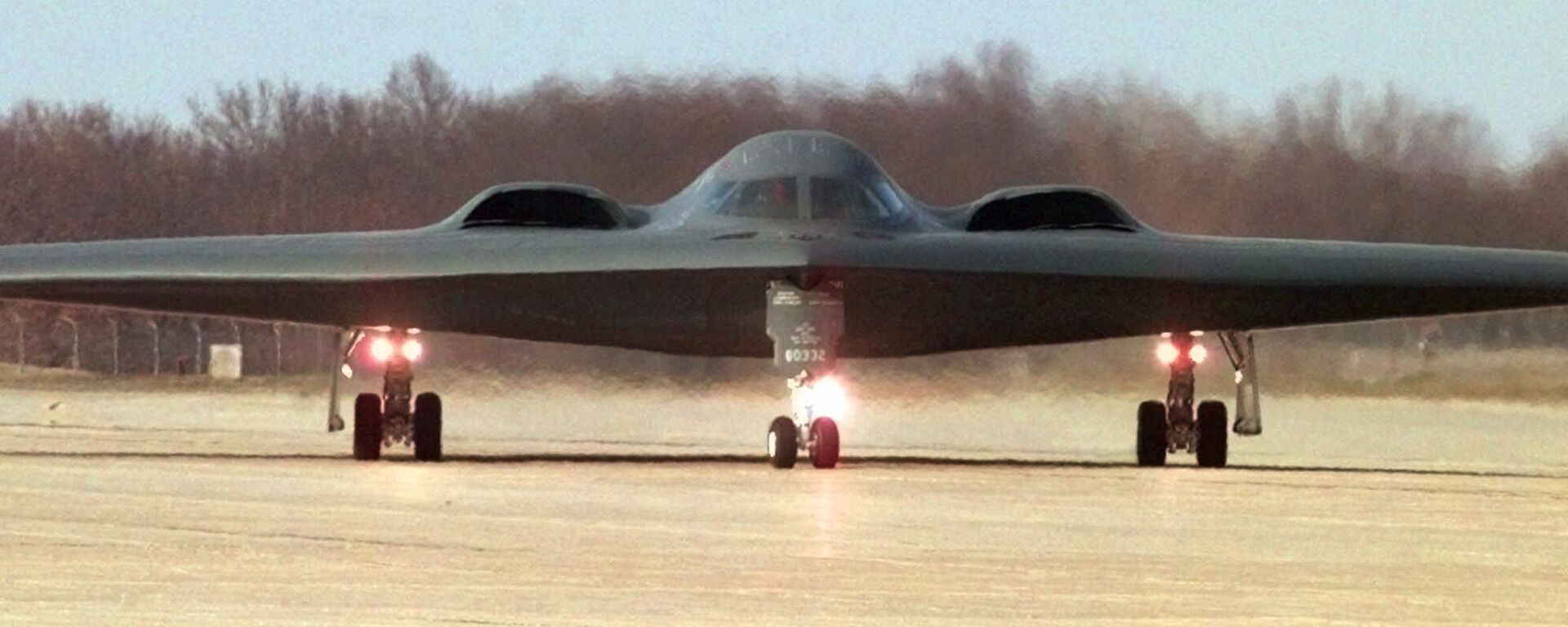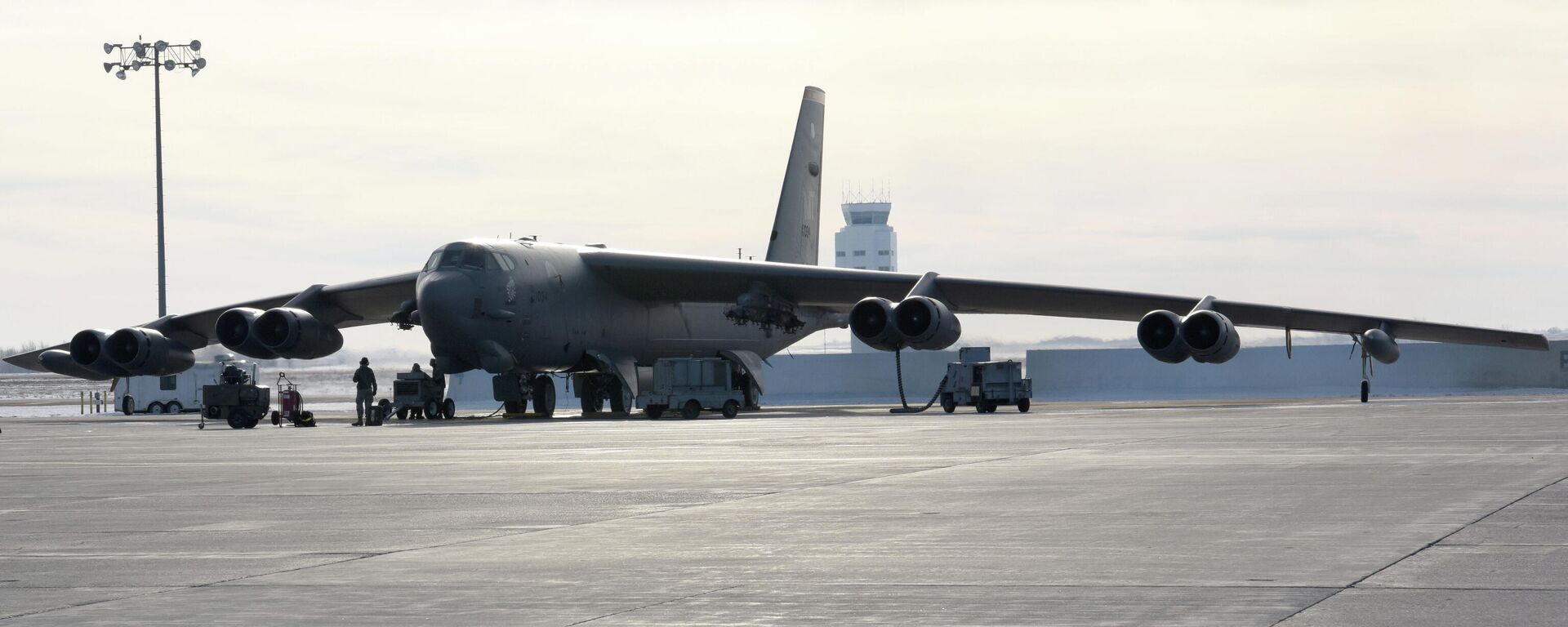https://sputnikglobe.com/20240523/b-2-vs-b-21-will-pentagons-new-big-budget-bomber-be-another-wedge-shaped-waste-of-money-1118599180.html
B-2 vs. B-21: Will Pentagon’s New Big-Budget Bomber Be Another Wedge-Shaped Waste of Money?
B-2 vs. B-21: Will Pentagon’s New Big-Budget Bomber Be Another Wedge-Shaped Waste of Money?
Sputnik International
The B-21 was unveiled in late 2022, and is envisioned as the Pentagon’s next-generation response to the increasingly sophisticated air defense and radar capabilities of America’s adversaries. But there’s a catch.
2024-05-23T11:27+0000
2024-05-23T11:27+0000
2024-05-23T12:14+0000
military
military & intelligence
us
us air force
air force
pentagon
https://cdn1.img.sputnikglobe.com/img/07e8/05/17/1118598849_0:54:1024:630_1920x0_80_0_0_22bbee2103aa7f00c7d5ff8dfc082b4c.jpg
The US Air Force has dropped fresh images of the Northrop Grumman B-21 Raider stealth strategic bomber, which the military hopes will become “the backbone of the US Air Force bomber fleet,” during testing at Edwards Air Force Base in California.Flight tests of the aircraft began in November. The Air Force expects B-21s to start entering service between 2025 and 2027.In the meantime, the Pentagon will have to make do with its «attractive museum piece» Northrop B-2 Spirit bombers, created during the twilight of the Cold War, introduced in the late 1990s, and used to a limited extent to bomb Yugoslavia, Iraq, Afghanistan, and Libya between 1999 and 2017. The B-2 bomber fleet was grounded in December 2022 after a mystery in-flight emergency over Missouri, but returned to service in May 2023.B-2 vs. B-21: What’s Changed?At first glance, the B-21 looks similar to the B-2. Both are sleek, flying wedge-shaped aircraft designed to stealthily sneak into enemy territory for conventional or nuclear bombing missions, and are expected to carry the same types of munitions, from 230 kg unguided or glide bombs to 910 kg precision-guided munitions, stand-off cruise missiles, and B61 or B83 nuclear bombs.Pentagon chief Lloyd Austin promised in 2022 that the B-21 would feature the latest advances in stealth tech, making it difficult for “even the most sophisticated air defenses” to detect it. The airmen flying the plane will surely hope that Austin’s words aren’t just an empty boast, with US adversaries including Russia and China developing powerful over-the-horizon radars specifically to detect the latest stealth aircraft.Small, symbolical differences also exist. While B-2s were named after US states («Spirit of Missouri,» «Spirit of Kansas,» etc.), the B-21 is named after the Doolittle Raiders – the daring WWII-era US airman who bombed Tokyo four months after Pearl Harbor in 1942, kicking off a campaign that would culminate in the atomic bombings of Hiroshima and Nagasaki in 1945.What Hasn’t Changed: Same High, High PricesWith a price tag of over $2.1 billion per plane, the B-2 holds the record of world’s most expensive-ever aircraft, with only 21 of 132 planned B-2s delivered. Northrop Grumman promises that the B-21 will cost «only» $692 million per plane, but if the experiences developing its predecessor and the general trajectory of new US aircraft designs are anything to go by, it is expected to cost much, much more in the end.The Air Force wants at least 100 B-21s, for a total of $69.2 billion. But that’s not counting service costs, maintenance, and other expenses – which can climb astronomically into the trillions, as Lockheed Martin’s F-35 program can attest to.
https://sputnikglobe.com/20240513/attractive-museum-piece-aging-us-b-2-stealth-bombers-outdated-in-every-respect-1118414594.html
https://sputnikglobe.com/20240213/b-52-bomber-overhaul-economically-viable-given-cost-of-developing-new-aircraft-1116761936.html
2024
News
en_EN
https://cdn1.img.sputnikglobe.com/img/07e8/05/17/1118598849_57:0:968:683_1920x0_80_0_0_442325a07d3ebcbc89493c004cae4e0a.jpg
is b-21 better than b-2, why is us developing b-21 bomber
is b-21 better than b-2, why is us developing b-21 bomber
The B-21 was unveiled in late 2022, and is envisioned as the Pentagon’s next-generation response to the increasingly sophisticated air defense and radar capabilities of America’s adversaries. But there’s a catch.
Flight tests of the aircraft began in November. The Air Force expects B-21s to start entering service between 2025 and 2027.
B-2 vs. B-21: What’s Changed?
At first glance, the B-21 looks similar to the B-2. Both are sleek, flying wedge-shaped aircraft designed to stealthily sneak into enemy territory for conventional or nuclear bombing missions, and are expected to carry the same types of munitions, from 230 kg unguided or glide bombs to 910 kg precision-guided munitions, stand-off cruise missiles, and B61 or B83 nuclear bombs.
But the aircraft feature a number of important differences, first and foremost size – as hinted at by the B-21’s Pratt & Whitney F135-descended twin engine configuration – compared to the B-2’s four General Electric F118-GE-100 turbofans. Smaller size means smaller payload (10-15 tons instead of 18-23 tons, respectively). It also means less fuel capacity (9,650 km for the B-21 vs 11,100 km for the B-2).
Small, symbolical differences also exist. While B-2s were named after US states («Spirit of Missouri,» «Spirit of Kansas,» etc.), the B-21 is named after the Doolittle Raiders – the daring WWII-era US airman who bombed Tokyo four months after Pearl Harbor in 1942, kicking off a campaign that would culminate in the atomic bombings of Hiroshima and Nagasaki in 1945.
What Hasn’t Changed: Same High, High Prices
With a price tag of over $2.1 billion per plane, the B-2 holds the record of world’s most expensive-ever aircraft, with only 21 of 132 planned B-2s delivered. Northrop Grumman promises that the B-21 will cost «only» $692 million per plane, but if the experiences developing its predecessor and the general trajectory of new US aircraft designs are anything to go by, it is expected to cost much, much more in the end.



